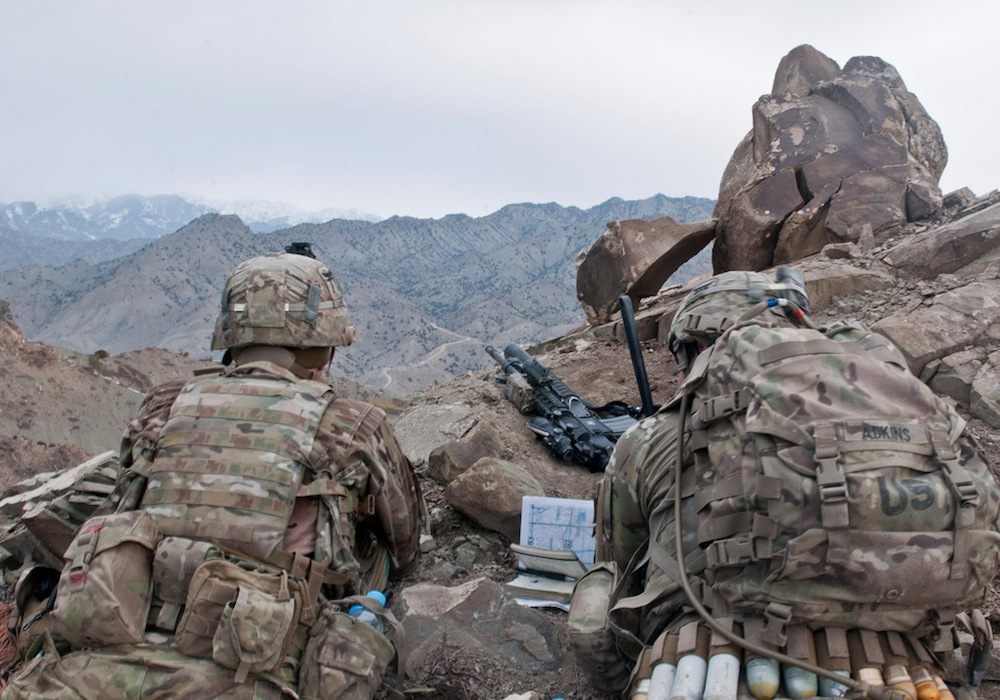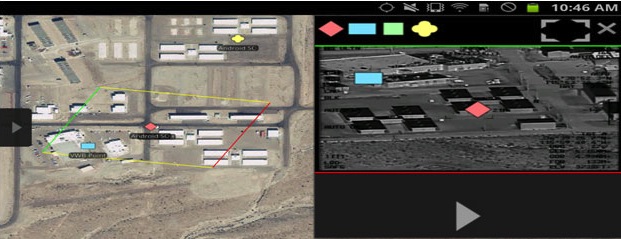Troops Call for Military Airstrike? There's an App for That

The U.S. military is developing an app that may one day enable troops in battle to call in airstrikes using their smartphones. The technology could help reduce the amount of friendly or civilian casualties during combat operations, according to the app's developers.
Called ATAK (Android Terminal Assault Kit), the military app is being developed with Draper Laboratory, a not-for-profit research and development lab based in Cambridge, Mass. The system will be compatible with Android phones, and will also be used for navigation, spatial awareness and a means to control drone systems, according to officials at Draper Laboratory.
The app could help protect soldiers by creating distance between them and the fighting, while also ensuring that combat decisions are made based on real-time information and logistics on the ground. [9 Totally Cool Uses for Drones]
"It's one thing for a user behind a desk in a climate-controlled office to toggle back and forth between 10 windows, deal with system crashes, and wait 60 seconds for booting up," Laura Major, who leads Draper's human-centered engineering work, said in a statement. "It's another thing to deal with those issues while someone is shooting at you or if you're jumping out of a plane. That's where ATAK comes in."
Typically, troops organize airstrikes using GPS receivers and laptop computers, but this requires simultaneously taking note of the location of friendly forces and civilians, assessing the status of nearby aircraft, calculating the time it will take for bombers to reach their targets, and considering the types of munitions onboard. The information is relayed to overhead pilots, but occasionally there are transcription, communication or memory errors, Draper officials said.
With the ATAK app, soldiers will be able to use handheld devices to connect to military's network of satellites and communications, allowing them to conduct battlefield surveillance, establish safe zones and track supplies that are being aerially delivered. The information can be easily shared with overhead pilots, and the map-based interface will enable users to label areas or specific buildings, which will help troops on the ground add context to raw video feeds or data points that are transmitted to bomber pilots.
U.S. Special Forces recently began testing a prototype of the app overseas, Draper officials said. Next year, the app could be used more widely in training and combat situations.
Get the world’s most fascinating discoveries delivered straight to your inbox.
ATAK was tested in a variety of military aircraft exercises to replicate some of the challenges faced by troops in real battles. Draper engineers used this information to design the app and test its efficacy.
"Operators who used the app during the exercises also indicated that by keeping all of the information in a well-organized, easy to access display, the likelihood of friendly fire accidents, civilian casualties and collateral damage would be significantly reduced," Draper officials said in a statement.
Follow Denise Chow on Twitter @denisechow. Follow LiveScience @livescience, Facebook & Google+. Original article on LiveScience.

Denise Chow was the assistant managing editor at Live Science before moving to NBC News as a science reporter, where she focuses on general science and climate change. Before joining the Live Science team in 2013, she spent two years as a staff writer for Space.com, writing about rocket launches and covering NASA's final three space shuttle missions. A Canadian transplant, Denise has a bachelor's degree from the University of Toronto, and a master's degree in journalism from New York University.



